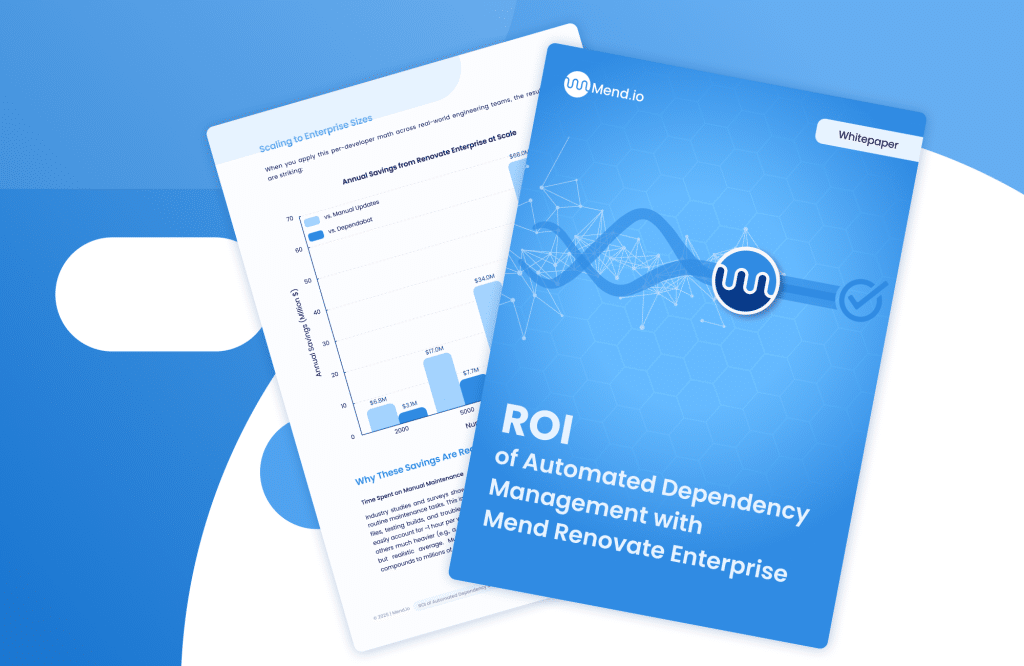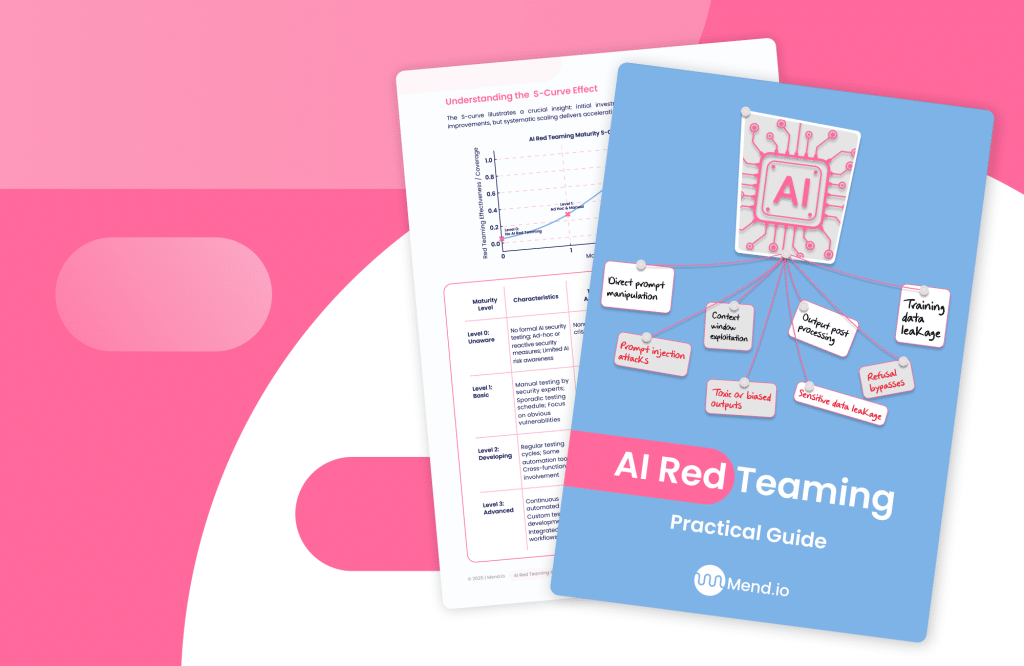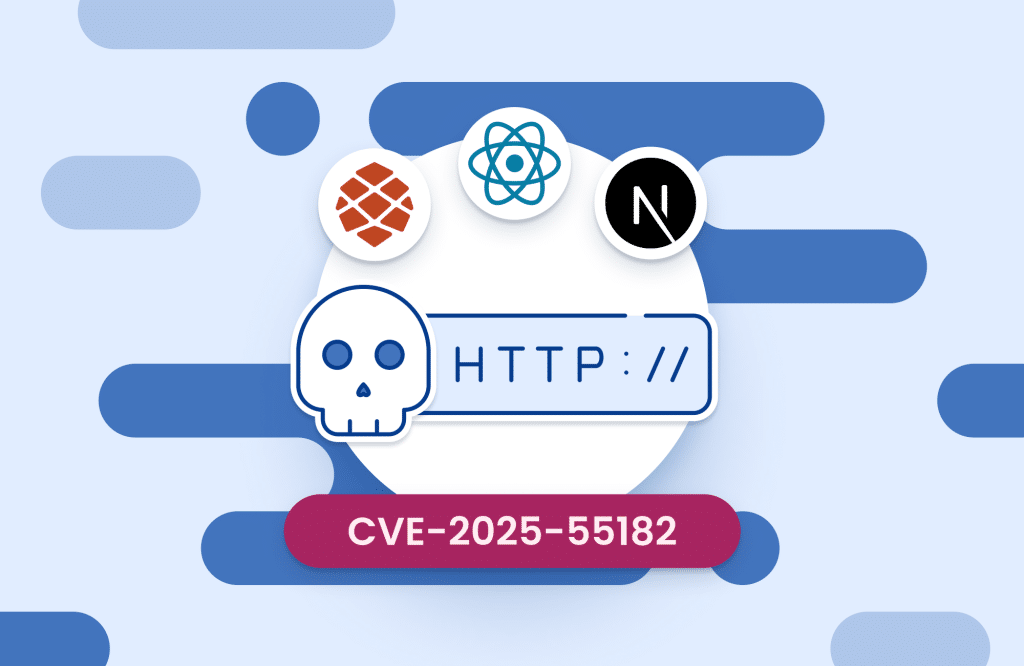Table of contents
Code Scanning in 2025: Why, How & the Role of Scanning in AI Security

Code scanning is the process of automatically analyzing source code to identify potential security vulnerabilities, bugs, and other code quality issues. It’s a crucial part of secure application development and is often considered a key part of broader source code analysis practices that improve visibility into application risk.
Code scanning tools mainly use static analysis methods (examining code without running it), in contrast to dynamic analysis tools which analyze applications while they are running. Understanding the distinction between these approaches—and between SAST vs SCA specifically—is essential for building a complete AppSec strategy.
Code scanning tools analyze code for various issues, including:
- Security vulnerabilities: Weaknesses that could be exploited by attackers, such as SQL injection, cross-site scripting (XSS), and buffer overflows.
- Bugs: Errors in the code that can lead to unexpected behavior or crashes.
- Code quality issues: Poorly written or inefficient code that could be difficult to maintain or understand.
- Security misconfigurations: Settings that make the application vulnerable to attacks.
- Hardcoded secrets: Sensitive information like passwords or API keys stored directly in the code.
What is secure code scanning?
Secure code scanning is the process of automatically analyzing application source code, binaries, or bytecode to identify potential security vulnerabilities before deployment. It inspects software for known weaknesses such as input validation flaws, insecure coding practices, and dependencies that could be exploited by attackers.
This approach to security reduces the risk of security incidents originating from software flaws. It enables development teams to address vulnerabilities early in the software development lifecycle (SDLC), minimizing the window of exposure. Secure code scanning is a component of modern DevSecOps strategies, ensuring security is embedded into every stage of development.
This is part of a series of articles about SAST, covering modern SAST tools and practical guidance for selecting the right SAST solutions for your development workflows.
Benefits of code scanning
Early detection of vulnerabilities
By integrating security checks directly into the coding process, potential issues such as injection flaws, authentication weaknesses, and insecure dependencies can be identified before the application is released to production. Tools that minimize unnecessary alerts and SAST false positives tend to be adopted more consistently by developers because they focus attention on actionable risks.
Early vulnerability detection also reduces the organization’s attack surface by preventing known problems from reaching end users. This proactive stance improves the overall security posture and increases stakeholder confidence in the software being developed.
Reducing cost and complexity
Addressing vulnerabilities early through code scanning significantly reduces both cost and complexity associated with fixing security issues. Bugs or vulnerabilities discovered post-release often require urgent patches, which can disrupt development cycles and strain resources. By catching issues before deployment, organizations avoid the high costs related to emergency fixes, downtime, or even customer data breaches.
Integrating code scanning into the development workflow simplifies compliance efforts and helps maintain cleaner code bases over time. Teams spend less time investigating and resolving incidents because vulnerabilities are managed as part of regular development activities instead of being deferred.
Strengthening compliance and governance
Many regulatory frameworks and industry standards, such as GDPR, HIPAA, and PCI DSS, require organizations to demonstrate due diligence in securing their software. Code scanning makes it easier to comply with these mandates by providing documented evidence that proactive security testing has occurred.
Automated scanning tools generate audit trails and reports, simplifying the burden of compliance and ensuring organizations can demonstrate their commitment to software security. Many teams enhance this process by combining code scanners with source code analysis tools that enforce consistent governance and reporting across projects. In addition, code scanning supports stronger governance by enforcing application security policies across an organization’s development teams. It standardizes security practices and integrates them into software delivery processes.
What vulnerabilities can code scanning detect?
Here are a few common types of vulnerabilities that can often be detected by code scanning tools.
SQL injection
SQL injection vulnerabilities occur when user-supplied data is improperly sanitized before being included in SQL queries. Attackers exploit these weaknesses to run arbitrary SQL commands, potentially gaining unauthorized access to databases or manipulating data.
Code scanning tools can identify insecure coding patterns such as direct incorporation of user inputs into queries, flagging lines of code susceptible to SQL injection. Pairing automated scanners with source code review tools allows teams to uncover design-level flaws and risky logic that static analysis alone might miss.
Detecting SQL injection early in the development process protects sensitive information such as usernames, passwords, and financial data. Remediation involves adopting secure coding techniques like using parameterized queries or ORM frameworks that abstract raw SQL commands.
Cross-site request forgery (CSRF)
Cross-site request forgery (CSRF) attacks occur when an authenticated user is tricked into submitting unwanted actions through a web application. Attackers exploit sessions to perform unauthorized operations, often by embedding malicious requests in third-party websites or emails.
Code scanning tools detect missing CSRF tokens and check for adequate validation of user actions, helping developers spot and fix vulnerabilities during development. Mitigating CSRF relies on consistently enforcing anti-forgery validation mechanisms, such as using unique tokens in requests and ensuring state changes aren’t possible without proper authorization.
Cross-site scripting (XSS)
Cross-site scripting (XSS) vulnerabilities allow attackers to inject scripts into web pages viewed by other users, leading to data theft, session hijacking, or site defacement. These vulnerabilities often arise when applications fail to properly sanitize or escape user-generated content before rendering it in the browser.
Code scanning solutions systematically identify unsafe handling of user input and output, flagging potential XSS vectors. Addressing XSS is critical for securing interactive applications, especially those handling sensitive data or personal information. Developers must consistently apply output encoding, input validation, and content security policies (CSP) to prevent attackers from leveraging these flaws.
Remote code execution
Remote code execution (RCE) vulnerabilities enable attackers to run arbitrary code on a target system, often leading to full compromise of servers or critical infrastructure. These vulnerabilities can result from insufficient input validation, unsafe use of system calls, or insecure function usage.
Code scanning helps pinpoint risky coding patterns, such as deserialization of untrusted data or unrestricted execution of system commands. RCE threats are among the most severe security risks, as successful exploitation can lead to data breaches, lateral movement within internal networks, or even automation of attacks.
Buffer overflows
Buffer overflow vulnerabilities occur when programs write more data to a buffer than it can hold, overwriting adjacent memory areas and potentially enabling arbitrary code execution. They are most common in languages lacking automatic bounds checking, such as C and C++.
Code scanning tools analyze memory handling operations to spot insecure practices, such as unchecked array indices, unsafe copying functions, or insufficient buffer allocation. Preventing buffer overflows involves enforcing bounds checks, using memory-safe functions, and adopting programming languages and libraries designed to prevent such errors.
Hardcoded secrets
Hardcoded secrets such as passwords, API keys, and cryptographic keys in source code are a common vector for unauthorized access. Once software is released, attackers often scan public repositories or deployed applications looking for these exposed secrets.
Code scanning tools can automatically recognize patterns of hardcoded values, warning developers to remove credentials before code reaches production. Replacing hardcoded secrets with secure storage alternatives, such as environment variables or secrets management services, is a key remediation.
The role of code scanning in AI and LLM security
Security scanning for AI-generated code
The rise of AI-powered code assistants like GitHub Copilot introduces new security challenges that traditional code scanning tools must now account for. While these tools improve developer productivity, they also increase the risk of injecting insecure or non-compliant code into applications.
Studies have shown that a significant portion of AI-generated code may contain vulnerabilities, and developers often treat this output as trustworthy without verification. This creates a new category of risk—vulnerabilities introduced at scale by automation. To address this, code scanning practices must evolve to detect AI-generated code and assess it for security and licensing issues.
Scanners should identify patterns that indicate code was generated by AI and apply targeted checks for known risky constructs. This visibility allows organizations to enforce security policies, ensure due diligence, and reduce the risk of deploying flawed or legally questionable code.
Risks in LLM applications
LLMs embedded in applications present another attack surface. Risks such as prompt injection, insecure plugin design, and model overreach are now part of secure software development. OWASP has defined a top 10 list of vulnerabilities specific to LLMs, including training data poisoning and model theft.
Code scanning tools should expand their scope to analyze how LLMs are integrated into applications, particularly how input and output are handled, and whether safeguards like input sanitization or access controls are in place.
Key code scanning approaches
Software composition analysis (SCA)
Software composition analysis (SCA) focuses on identifying vulnerabilities and license risks in third-party libraries, frameworks, and dependencies that modern applications commonly use. These tools scan the software’s bill of materials to match dependencies against vulnerability databases, such as the national vulnerability database (NVD), highlighting known issues that could affect application security.
SCA provides visibility into indirect risks that may be inherited from open-source or proprietary software. SCA tools help teams prioritize remediation based on both severity and exploitability, and they are invaluable for maintaining compliance with licensing requirements and reducing the risk of supply chain attacks.
Static application security testing (SAST)
Static application security testing (SAST) examines source code, bytecode, or binaries without running the application. If you’re evaluating the market, exploring the latest best SAST tools or curated lists of SAST tools for DevSecOps can help identify solutions that integrate well into CI/CD workflows. SAST tools perform deep analysis of code structure and logic to uncover vulnerabilities such as injection flaws, improper authentication, and insecure data handling.
Since SAST operates before the application is executed, it is suitable for early-stage security checks and enables developers to identify and fix issues before merging or releasing code. SAST solutions integrate into IDEs, code repositories, and CI/CD pipelines, providing real-time feedback and allowing for rapid iteration. By automating code review for security, SAST improves development efficiency and coverage.
Learn more in our detailed guide to SAST tools, which covers implementation strategies and real-world evaluation criteria.
Interactive application security testing (IAST)
Interactive application security testing (IAST) combines elements of SAST and dynamic application security testing (DAST), which evaluates applications in a running state, simulating real-world attacks to find vulnerabilities. IAST analyzes applications from inside as they run, typically through instrumentation agents. IAST tools monitor code execution, data flow, and interactions between components to find security issues in real time during functional testing.
IAST is effective for detecting vulnerabilities like insecure data handling, authentication flaws, and logic errors that require in-context validation. Since IAST tools operate within running applications, they deliver real-time feedback to developers and testers, enabling quick remediation.
LLM-supported static application security testing (LSAST)
LLM-Supported Static Application Security Testing (LSAST) improves traditional SAST by integrating locally hosted large language models with static scan results. This approach allows the LLM to analyze both the scanned code and the initial SAST findings, focusing on identifying vulnerabilities that conventional tools may miss. Unlike pure LLM scanning, LSAST limits privacy risks by avoiding third-party APIs and using offline models.
LSAST further improves detection by integrating a knowledge retrieval system that fetches recent, relevant vulnerability reports based on the functional or structural similarity of the scanned code. These reports provide real-time context, helping the LLM reason about code in relation to newly discovered threats. Evaluations show that LSAST can detect high-risk issues missed by standard scanners.
Code scanning best practices
Organizations should consider the following practices to ensure their code is thoroughly scanned and secure.
1. Automate code scanning in workflows
Automating code scanning within development workflows ensures that security checks are consistently applied, regardless of team size or project velocity. This involves configuring tools to automatically run scans on events such as code commits, pull requests, or merges.
For example, integrating SAST or SCA tools into a Git-based workflow allows scans to trigger every time a new branch is pushed or a merge request is submitted. Teams designing such pipelines can reference this list of SAST tools for DevSecOps to find options that support incremental scanning and workflow automation. This enables near-instant feedback and helps developers fix issues in the same context they were introduced.
Automation also reduces the dependency on manual security reviews, which can be time-consuming and inconsistent. By shifting security testing left and embedding it into daily development tasks, organizations can ensure vulnerabilities are addressed incrementally, not reactively. Additionally, scan results can be annotated inline in code review tools, making it easier for teams to prioritize and remediate issues without disrupting their workflow.
2. Integrate scanning into the CI/CD pipeline
Security scanning should be a built-in, mandatory part of the CI/CD pipeline to ensure that all builds undergo rigorous checks before deployment. Teams still exploring their options can review a breakdown of leading SAST solutions to select one that best aligns with their automation and integration needs. This includes integrating static and dynamic analysis tools that run automatically during build and test phases.
For example, a pipeline can be configured to run SAST tools after a code compilation step and trigger DAST tools once the application is deployed to a test environment. CI/CD integration helps detect vulnerabilities introduced by recent code changes or third-party updates, preventing them from progressing to production.
Teams can enforce fail conditions in pipelines, such as blocking deployments when critical issues are found, while allowing non-blocking notifications for lower-severity findings. This balance maintains velocity while upholding security standards.
3. Use context-aware analysis
Context-aware analysis improves the precision of vulnerability detection by incorporating insights from application execution, data flows, and user inputs. Unlike basic pattern-matching tools, context-aware solutions analyze how variables are used across function calls, whether inputs are sanitized at the right time, and how user interactions influence control flow.
For example, if user input is passed through a sanitizer before being used in a query, context-aware tools can track this behavior and determine that an injection risk is mitigated. Conversely, if data is conditionally sanitized, tools can flag specific branches that bypass security controls.
These insights help prioritize remediation efforts based on real risk rather than theoretical vulnerabilities, making security more actionable and effective.
4. Include red teaming in your secure SDLC
Red teaming introduces an adversarial testing layer to the software development lifecycle, simulating real-world attack scenarios to uncover complex vulnerabilities that automated tools might overlook. This includes chaining multiple low-risk findings into a high-impact exploit, exploiting business logic flaws, or abusing misconfigured integrations.
By including red team exercises during staging or pre-release phases, organizations can identify systemic weaknesses in authentication, authorization, session management, or data exposure. The findings often feed back into secure coding standards and threat models, improving both process and implementation.
Red teaming also builds operational resilience by preparing teams to detect, respond to, and learn from attacks, reinforcing a proactive security posture across the SDLC.
5. Educate development teams
Security awareness and training are essential to enabling developers to write secure code from the start. This goes beyond one-time training sessions—ongoing, role-specific education tied to the technologies and threats relevant to the team is most effective.
For example, developers working on web applications should understand common OWASP Top 10 risks, while those writing system-level code should focus on memory safety and input validation.
Training can be reinforced through tools integrated into development environments, such as IDE plugins that highlight insecure patterns and suggest secure alternatives in real time. Post-scan reviews and retrospective sessions can also serve as learning opportunities, helping teams understand the root causes of vulnerabilities and how to prevent them.
Security code scanning for an AI native world with Mend.io
Mend SAST delivers fast, accurate, and developer-friendly static code analysis purpose-built for today’s AI-native applications. It detects vulnerabilities in code across 75+ languages and 100+ frameworks—without requiring builds or running applications. With AI-powered remediation, best-fix location guidance, and precision scanning that reduces false positives, Mend SAST empowers teams to secure modern software without slowing development. Seamless IDE and CI/CD integrations, incremental scanning, and unified dashboards make it easy to embed security into workflows and scale across enterprises.






